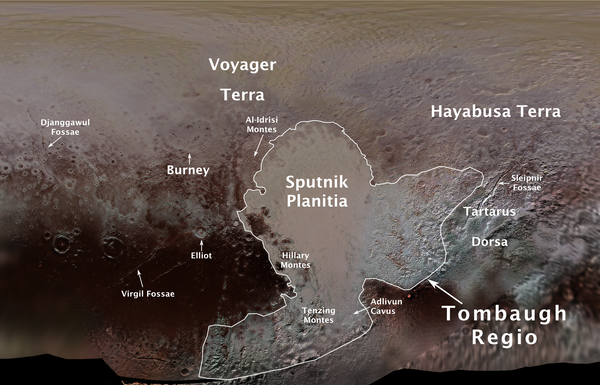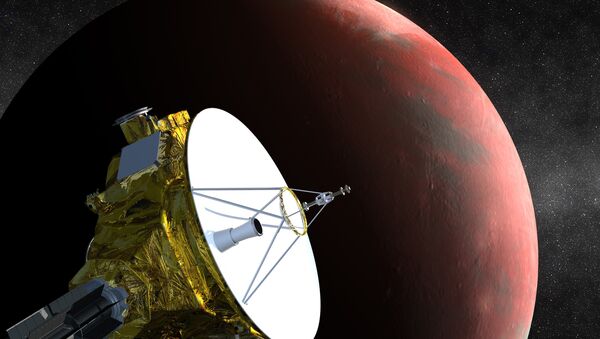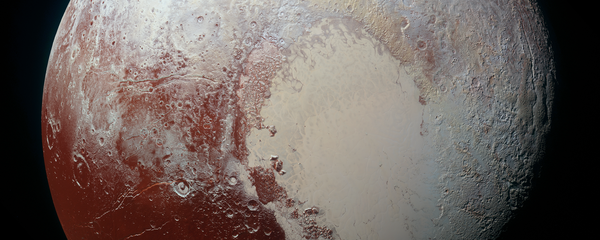A new map of Pluto has been produced using data from the close flyby carried out by the New Horizons spacecraft in July 2015.
The map has assigned 14 names to the outstanding geological features of the planet. Many of the landmarks are named after people and space missions which paved the way for the New Horizons exploration, which others are named after mythological underworld characters or other pioneering space missions, the International Astrononomical Union (IAU) announced on Thursday.
"We appreciate the contribution of the general public in the form of their naming suggestions and the New Horizons team for proposing these names to us," Schulz, chair of the IAU Working Group for Planetary System Nomenclature, said.
The largest landmark observed by New Horizons is called the Tombaugh Regio, in honor of Clyde Tombaugh (1906–1997), the US astronomer who discovered Pluto in 1930.

Sputnik Planitia is a large plain named after Sputnik 1, the first space satellite, launched by the Soviet Union in 1957.
Two mountain ranges are named Tenzing Montes and Hillary Montes, for the mountaineers who were the first to reach the summit of Mount Everest and return safely, in 1953.
Pluto, which was classified as a planet until 2006, is the best-known object of the Kuiper Belt, the region beyond Neptune. It is now believed that Pluto is simply the nearest object of the Kuiper Belt.
Launched in 2006, the New Horizons spacecraft was tasked with visiting and photographing the Kuiper Belt. After reaching Pluto in July 2015 and completing a flyby, the probe has continued its journey into the Kuiper Belt and is scheduled to carry out a flyby of another known object there, MU69, on New Year's Day, 2019.




